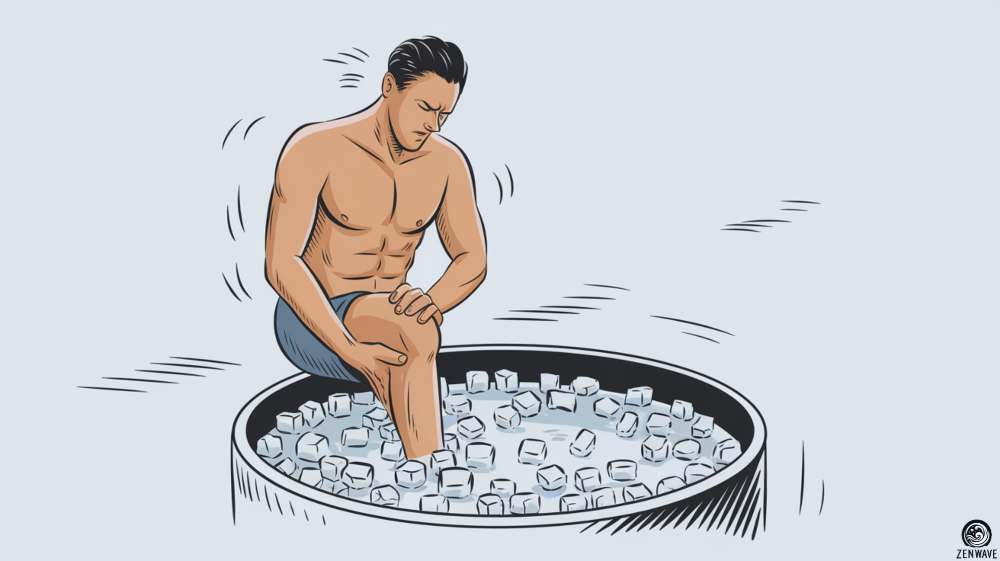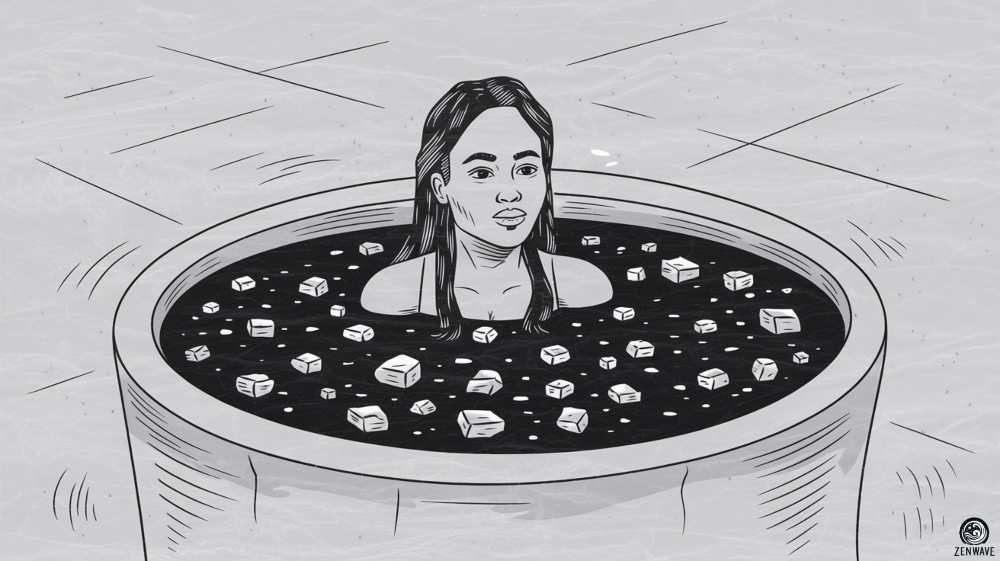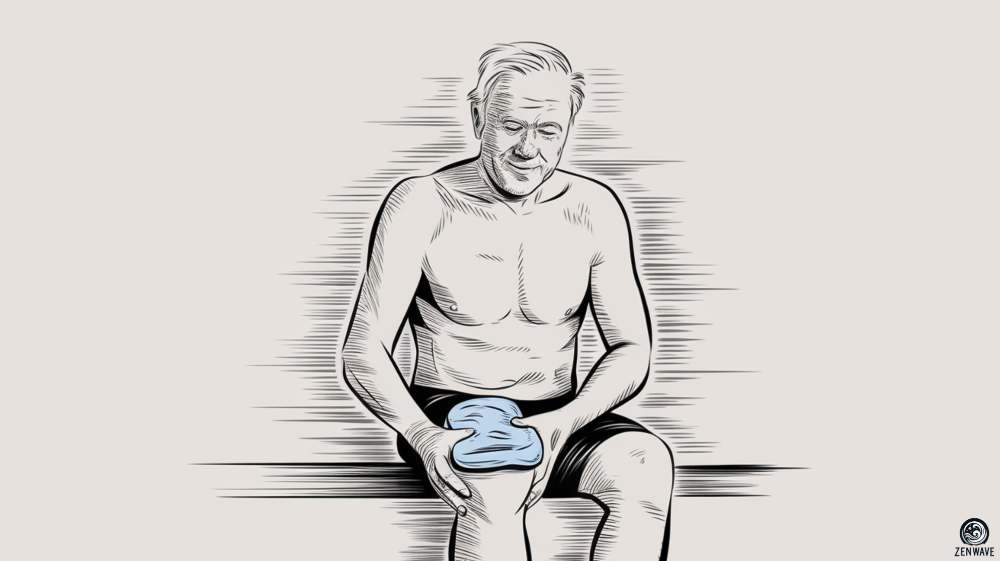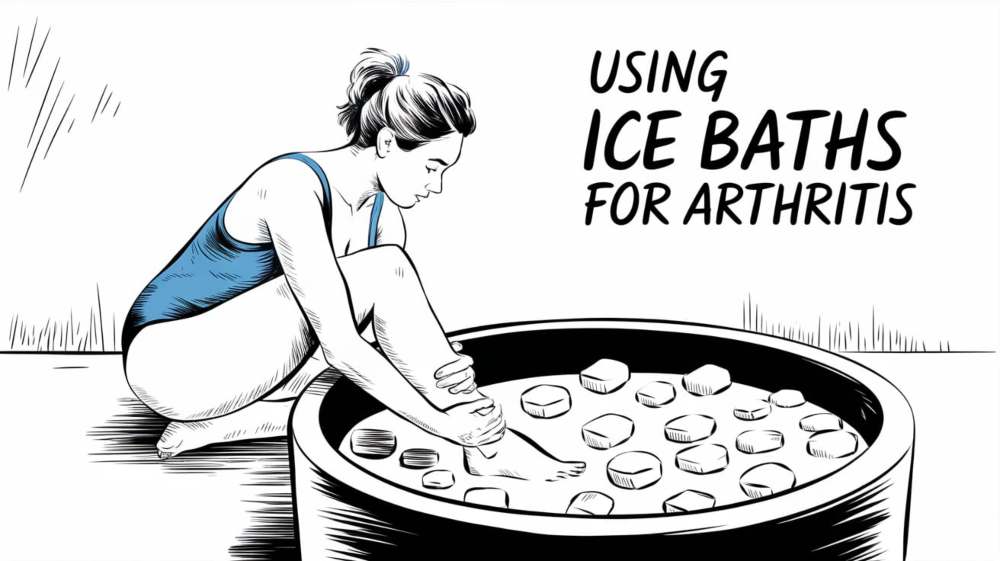Living with arthritis can be tough. The constant aches and stiffness can really put a damper on your day-to-day life. But what if there was a chilly solution that could help?
Icing, cryotherapy, and other cold therapy methods have been used for a long time to help with arthritis. Recent studies have shown ice baths can be another valuable tool for many types of arthritis, in some cases showing drastic improvement for quality of life.
Let’s dive into the world of ice baths, the research, and how they might just be the refreshing relief arthritis sufferers are looking for.
Key Benefits of Ice Baths for Arthritis

1. Reducing Inflammation
Ice baths can help reduce inflammation in and around arthritic joints through the following mechanisms:
- Vasoconstriction: Cold temperatures cause blood vessels to narrow, reducing blood flow to the affected area.
- Decreased metabolic activity: The cold slows down cellular processes, potentially limiting inflammatory responses.
- Reduced edema: Less blood flow can lead to decreased fluid accumulation in tissues surrounding the joints.
The result is often a noticeable reduction in joint swelling and associated pain.
2. Slowing Down Nerve Impulses
Cold therapy can modulate pain perception by affecting nerve function:
- Decreased nerve conduction velocity: Cold temperatures slow the speed at which nerves transmit pain signals.
- Reduced nerve sensitivity: Prolonged exposure to cold can temporarily desensitize nerve endings.
- Gate control theory: The sensation of cold may compete with pain signals, potentially reducing overall pain perception.
These effects can lead to a significant decrease in arthritis-related pain during and after an ice bath.
3. Constricting Blood Vessels
The vasoconstriction caused by ice baths has additional benefits beyond reducing inflammation:
- Initial reduced blood flow: Less blood in the affected area can lead to decreased pressure on surrounding tissues.
- Controlled swelling: The constriction of blood vessels helps manage edema, which can improve joint mobility.
These effects can contribute to both short-term relief and long-term management of arthritis symptoms.
4. Promoting Increasing Circulation After
The body’s response to cold exposure can have beneficial after-effects:
- Reactive vasodilation: As the body warms up post-ice bath, blood vessels dilate, increasing blood flow.
- Nutrient delivery: The increased circulation can bring fresh oxygen and nutrients to the affected joints.
- Waste removal: Enhanced blood flow may help remove metabolic waste products from the area.
This improved circulation can potentially aid in the healing process and provide additional relief from arthritis symptoms.
To see other ways ice baths can help, see our guide covering all the benefits of ice baths.
Research on Using Ice Baths For Arthritis

Scientists have been exploring various cold treatments to help people with arthritis. Here’s a look at three important studies on this topic.
Study 1: Whole Body Cold Water Therapy for Inflammatory Arthritis
A study from 2016 tested whole body cold water therapy on 121 volunteers with chronic inflammatory arthritis during a one-week period. They measured pain, sleep quality, and other health indicators.
Key findings:
- Patients reported less pain after cold water therapy
- Pain reduction increased as the week progressed
- Some improvement in sleep quality was observed
- No major side effects were reported
The research suggests that whole body cold water therapy might be a safe, at-home treatment for arthritis pain
Study 2: Hot and Cold Treatments for Knee Arthritis
This study from 2017 compared hot and cold treatments for knee osteoarthritis in 96 patients over three weeks. They looked at pain levels, mobility, and quality of life.
Key findings:
- Both hot and cold treatments showed some improvements in pain, mobility, and quality of life
- Benefits were still present but reduced when checked later
- No significant difference between hot and cold treatments
- Two weeks after treatment, there was little difference between treatment groups and the control group
The researchers concluded that both hot and cold treatments can help somewhat with knee arthritis, but the improvements were mild.
Study 3: Cold Water Baths for Gout Arthritis
A 2022 study in Indonesia examined cold water baths for gout, involving 76 people over four weeks. Half took daily 20-minute cold water baths (20-30°C).
Key findings:
- Cold water bath group showed improvements in: Pain levels, joint mobility, physical activity, Stress and anxiety levels, and overall quality of life
- Benefits were seen after two weeks and lasted through the study
- Cold water baths directly helped reduce pain and improve quality of life
The study concluded that cold water baths can be beneficial for people with gout, improving both physical symptoms and overall well-being.
Additional Cold Therapy Methods For Arthritis

From ice packs to whole-body soaks, all sorts of alternative cold therapy methods are used to help fight arthritis pain, showing that the power of cold can be a real game-changer for joint discomfort. These various techniques harness the pain-relieving and anti-inflammatory effects of cold temperatures to provide relief for achy, swollen joints.
Here’s a rundown of some popular cold therapy methods:
- Ice Packs: The classic go-to for quick, localized relief.
- Cold Compresses: Damp, chilled towels for a gentler approach.
- Coolant Sprays: For on-the-go, instant cooling.
- Cold Gel Packs: Flexible even when frozen, great for wrapping around joints.
- Ice Massage: Using ice directly on the skin for a cooling, massaging effect.
- Cold Water Soaks: Immersing affected areas in chilled water.
- Cryotherapy Chambers: Whole-body exposure to extremely cold air for short periods.
- Cold Therapy Machines: Circulating cold water through a wrap for consistent cooling.
- Contrast Baths: Alternating between cold and warm water for improved circulation.
These methods works by:
- Reducing inflammation in and around the joints
- Slowing down nerve impulses, which helps decrease pain
- Constricting blood vessels to reduce swelling
- By promoting increased circulation after the cold is removed, bringing fresh nutrients to the area
Cold Therapy Safety For Arthritis
When using ice directly, protect your skin by using a thin towel between ice and skin and limit contact to 15-20 minutes. Use cold therapy as part of a comprehensive treatment plan, and remember: if in doubt, check with your healthcare provider.
Final Thoughts
Cold therapy in many froms including ice baths, shows promising potential in managing arthritis symptoms. Many individuals find relief from pain and improved mobility through various cold therapy methods.
For those interested in exploring ice baths at home, our ZenWave Ice Pod offers an affordable and convenient option to get started. It is a durable and portable option that allows you to experience the benefits of cold water immersion in a controlled setting.
Ultimately, cold therapy can be a valuable addition to your arthritis management toolkit.

